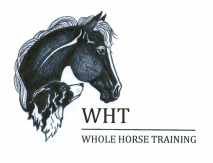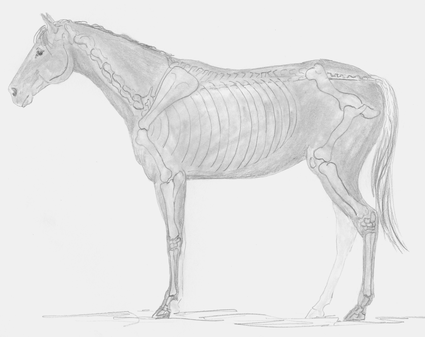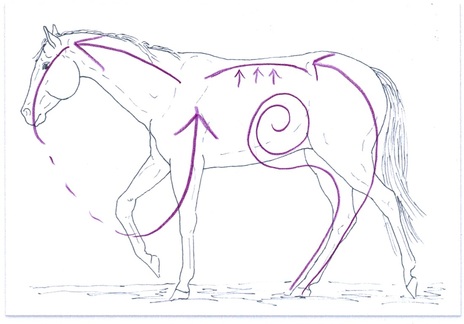Posture Dictates Comfort and Function
|
The same basic skeletal structure forms the foundation for every horse's build, regardless of breed or size, and to a great extent, it dictates the horse's outward appearance. A general knowledge of where bones and muscles are in the body is invaluable to artists and riders alike. Once you have a working knowledge of anatomy, the important thing is that you see posture when you look at a horse. Posture dictates comfort and function. The most comfortable and functionally efficient posture for a horse is one of relaxation, with the neck lowered, back raised and hindquarters engaged. We call this as a functional weight-bearing posture. Any time a horse experiences chronic tension or discomfort, that horse will compensate by limiting his range of motion and/or using himself abnormally. Countless situations, from slippery footing to poorly fitting tack can cause tension or discomfort. Left unattended, this tension becomes chronic. Once chronic, muscles become too tight (hypertonic) compensatory patterns appear. |
Neutral Posture Is Functional PostureThis horse is relaxed and comfortable in his posture. He has a released poll, a telescoping neck, and a healthy back. Note the slight upward curve of the thoracic spine. This horse is relaxed and comfortable in his posture. A horse’s function is dictated by his posture. A braced posture produces movement that is forced and stiff, ugly to view and uncomfortable to ride. A horse that is released and balanced in his body is able to move with ease.
|
Posture And Self-Carriage in Horses
|
In the Cycle of Self-Carriage, a horse continually
(1) Engages his core and pushes off the ground with his hind legs (2) Which in turn lifts and supports his back (3) While telescoping his head and neck forward (4) And lifting his withers and base. |
The structure of bones, their lengths, angles and they way they are put together dictates how a body will function in movement. That is why finding a horse with good conformation is so important. Even horses with good conformation will suffer from stresses placed on their structures if they are forced to move in bad posture.
Self-carriage is the holy grail of advanced horsemanship, but it needs to become a concern of every rider, at every level of ability, no matter what discipline or activity they choose to follow. Horses must be in self-carriage in order to stay healthy and sound. Neutral posture allows freedom and ease of movement. Without it, movement becomes forced and tense. Probably the most important part of the training process for any riding horse is being taught to adjust his way of going and develop the strength needed to carry the weight of a rider. Unfortunately for most horse this step is rarely addressed. |


